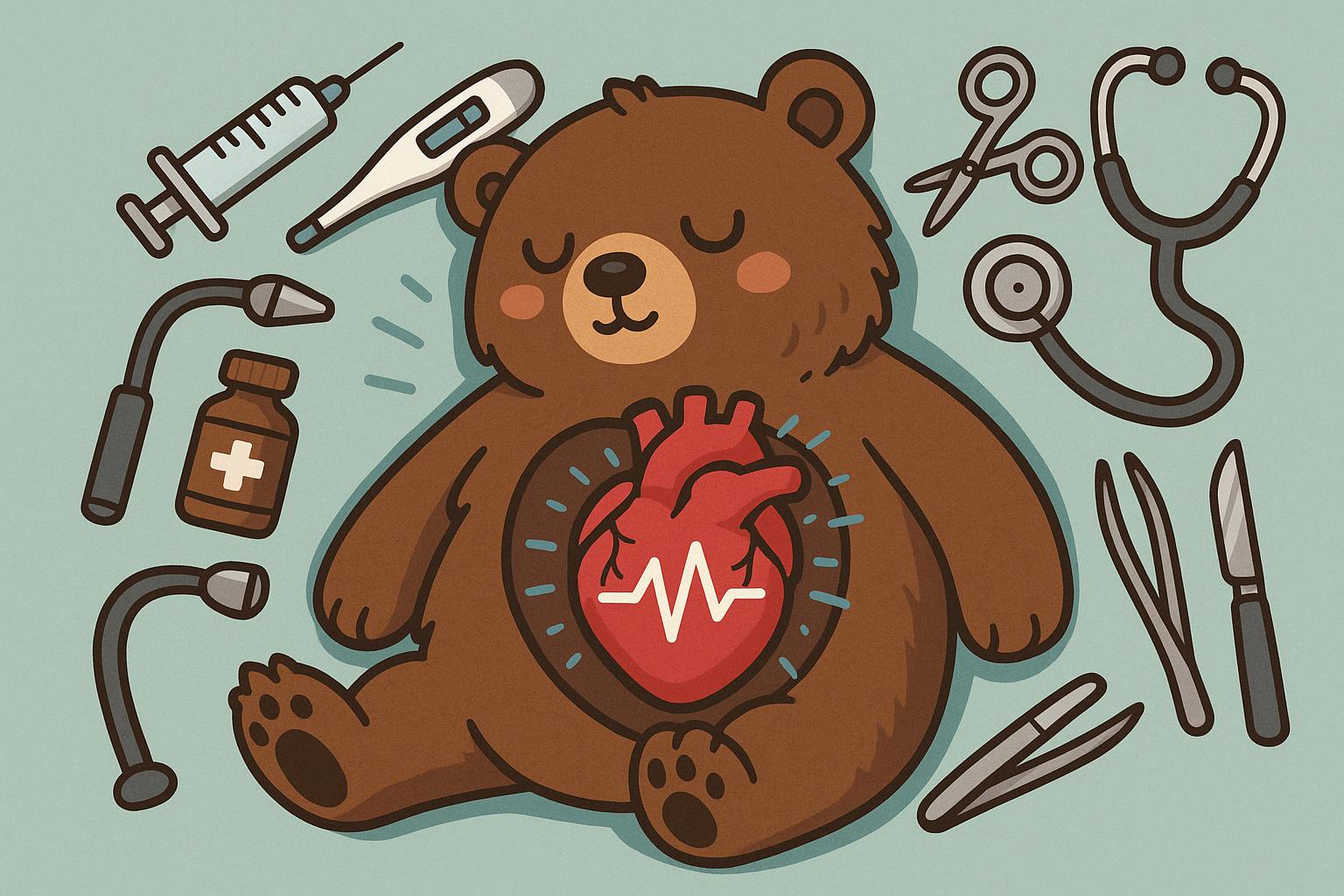Introduction to Bear Hibernation
Hibernation is a fascinating physiological state that some mammals, such as bears, undergo to survive harsh winter conditions. It involves a significant reduction in metabolic rate, body temperature, heart rate, and breathing. Bears are unique among hibernators due to several distinctive heart functions that allow them to endure extended periods of dormancy without suffering adverse effects.
Heart Rate Reduction
One of the most notable adaptations in hibernating bears is the reduction of heart rate. During hibernation, a bear’s heart rate can drop from a typical 40-50 beats per minute to as low as 8 beats per minute. This drastic reduction conserves energy and minimizes the need for food intake, which is vital during periods when food is scarce.
Maintaining Circulation
Despite the reduced heart rate, hibernating bears maintain adequate blood circulation to prevent tissue damage and ensure basic physiological functions. Their bodies have evolved to efficiently manage blood flow to essential organs, striking a balance between reduced metabolic demands and sufficient tissue perfusion. This efficient circulation prevents issues like blood clot formation and muscle wasting.
Adaptation to Blood Pressure Changes
Hibernation in bears also involves remarkable adaptations to blood pressure. Bears experience a controlled reduction in blood pressure during hibernation, which helps minimize stress on the cardiovascular system. This adaptation is particularly important in preventing negative impacts such as hypertension or stroke, common risks with prolonged periods of immobility.
Bears have developed the ability to efficiently utilize oxygen during hibernation. Even though their breathing rates decrease significantly, the oxygen extracted from each breath is maximized. This adaptation is crucial in sustaining vital organ functions with limited respiration and energy expenditure.
Relevance to Human Medicine
The unique cardiovascular adaptations of hibernating bears offer valuable insights into potential medical applications for humans. Studying these adaptations can contribute to advancements in treating heart diseases, developing methods for long-term space travel, and improving surgical recovery processes. For more information on ongoing research, you can check organizations such as North American Bear Center which is dedicated to understanding bear biology and conserving bear habitats.
Conclusion
Understanding the unique heart functions of hibernating bears sheds light on the remarkable adaptations these creatures have developed to endure long periods of inactivity. By exploring these natural phenomena, researchers can gain insights that may have applications in medicine and other human endeavors. Bears continue to be a subject of keen interest for scientists, conservationists, and wildlife enthusiasts alike.

